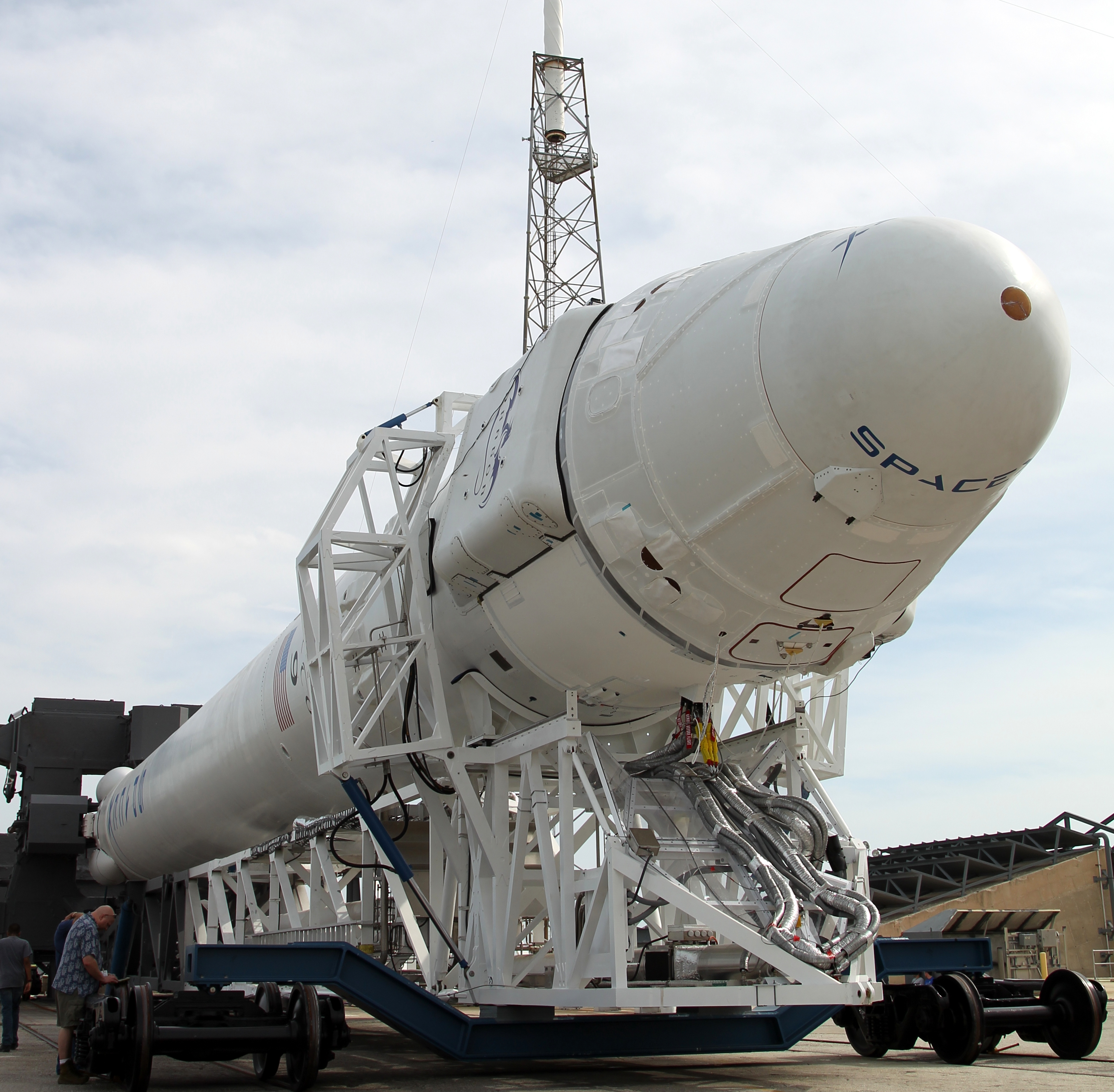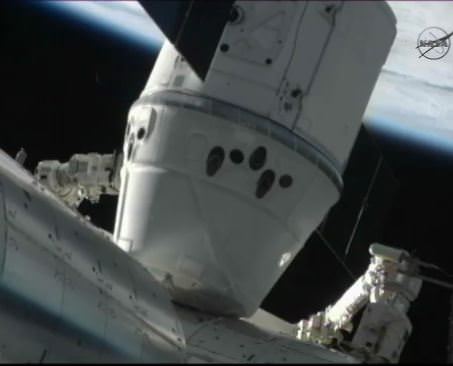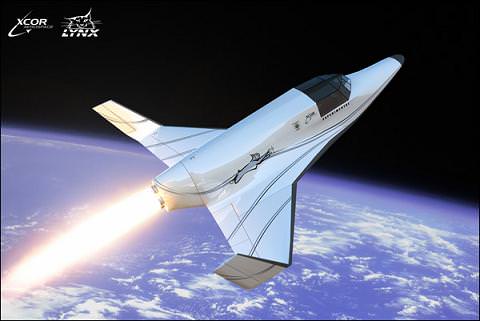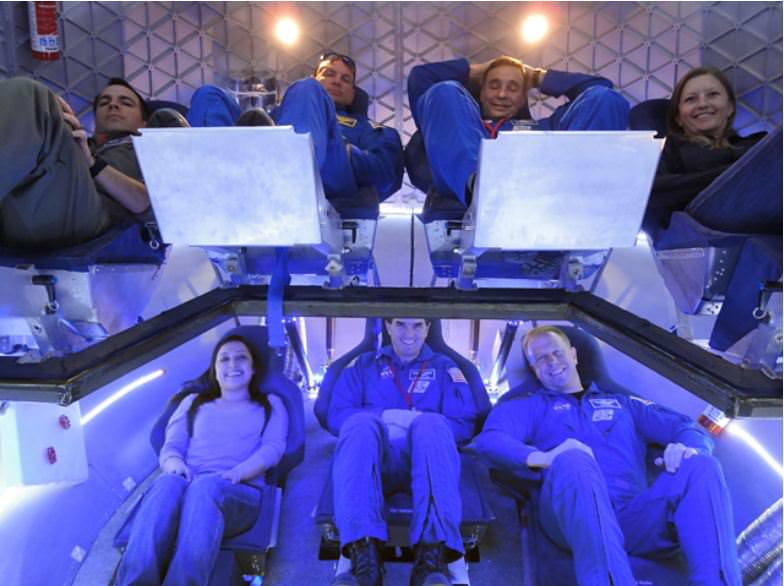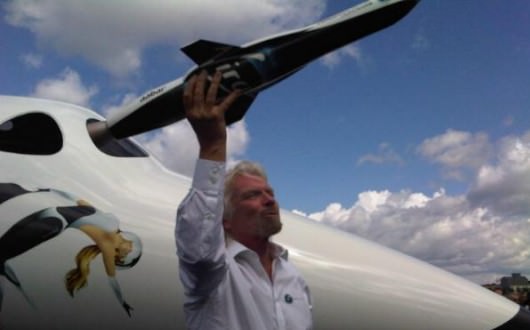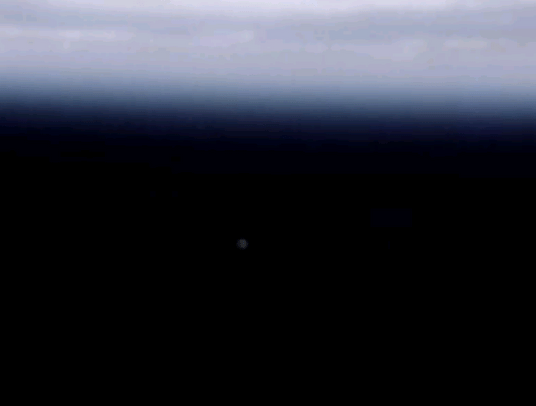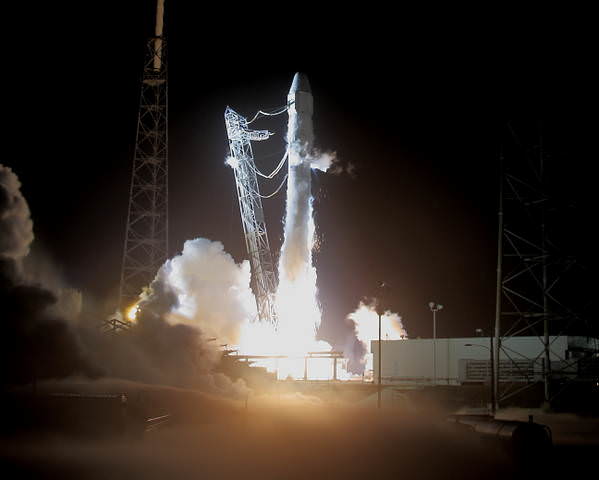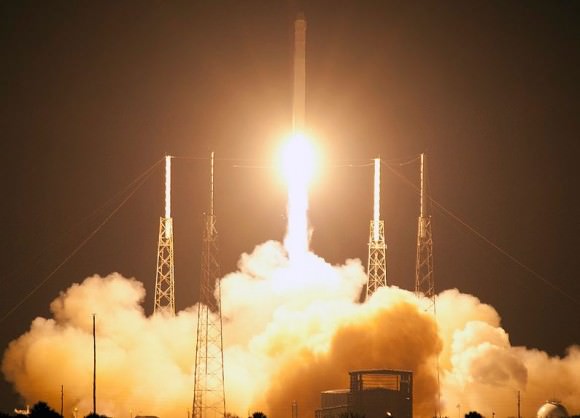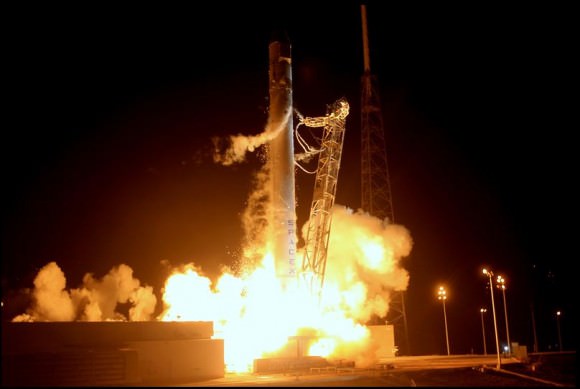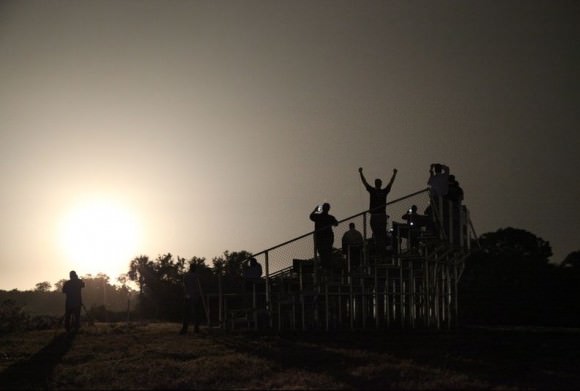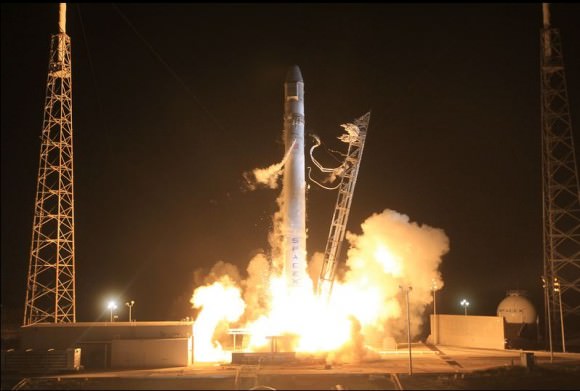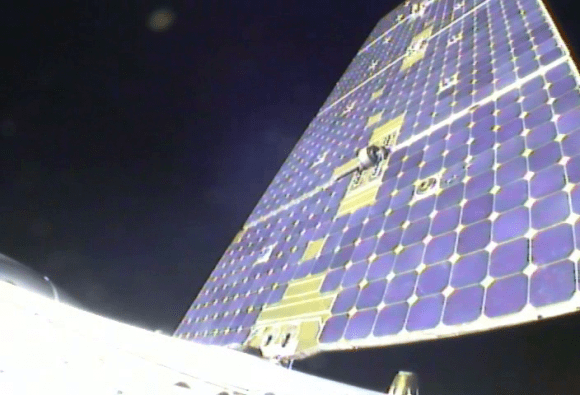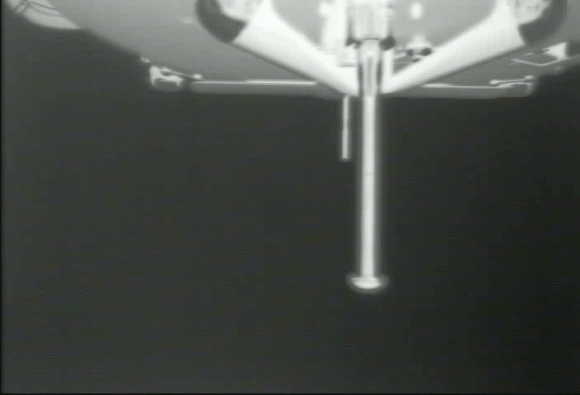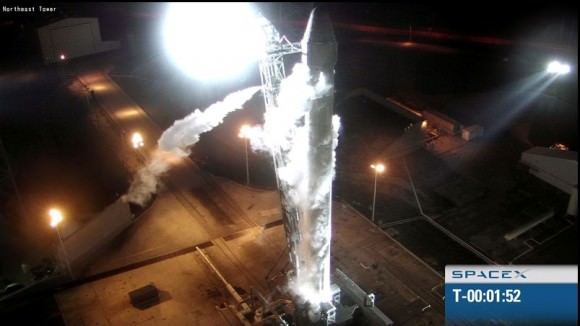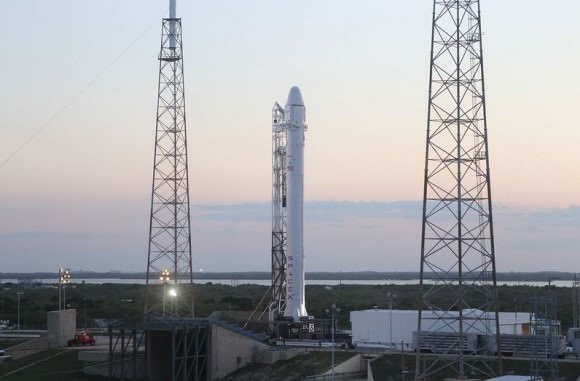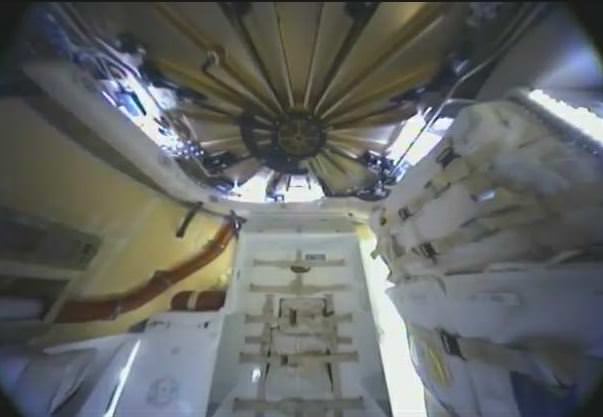Image Caption: Antares Rocket At Wallops Flight Facility Launch Pad. Orbital Sciences Corporation’s Antares rocket at the launch pad at NASA’s Wallops Flight Facility. In a few months, Antares is scheduled to launch a cargo delivery demonstration mission to the International Space Station as part of NASA’s Commercial Orbital Transportation Services (COTS) program. Credit: NASA
At long last, Orbital Sciences Corporation has rolled their new commercially developed Antares medium class rocket to the nation’s newest spaceport – the Mid-Atlantic Regional Spaceport (MARS) at Wallops Island,Va – and commenced on pad operations as of Monday, Oct 1.
The long awaited rollout marks a key milestone on the path to the maiden test flight of the Antares, planned to blast off before year’s end if all goes well.
This is a highly noteworthy event because Antares is the launcher for Orbital’s unmanned commercial Cygnus cargo spacecraft that NASA’s hopes will reestablish resupply missions to the International Space Station (ISS) lost with the shuttle’s shutdown.
“MARS has completed construction and testing operations on its launch complex at Wallops Island, the first all-new large-scale liquid-fuel launch site to be built in the U.S. in decades,” said David W. Thompson, Orbital’s President and Chief Executive Officer.
“Accordingly, our pad operations are commencing immediately in preparation for an important series of ground and flight tests of our Antares medium-class launch vehicle over the next few months. In fact, earlier today (Oct. 1), an Antares first stage test article was transported to the pad from its final assembly building about a mile away, marking the beginning of full pad operations.”
Antares 1st stage rocket erected at Launch Pad 0-A at the Mid-Atlantic Regional Spaceport (MARS) at NASA Wallops Flight Facility in Virginia. Credit: NASA
In about 4 to 6 weeks, Orbital plans to conduct a 30 second long hot fire test of the first stage, generating a total thrust of 680,000 lbs. If successful, a full up test flight of the 131 foot tall Antares with a Cygnus mass simulator bolted on top is planned for roughly a month later.
An ISS docking demonstration mission to the ISS would then occur early in 2013 which would be nearly identical in scope to the SpaceX Falcon 9/Dragon demonstration flight successfully launched and accomplished in May 2012.
The first commercial resupply mission to the ISS by SpaceX (CRS-1) is now set to lift off on Oct. 7 from Cape Canaveral, Florida.
The 700,000 lb thrust Antares first stage is powered by a pair of Soviet era NK-33 engines built during the 1960 and 1970’s as part of Russia’s ill-fated N-1 manned moon program. The engines have since been upgraded and requalified by Aerojet Corp. and integrated into the Ukrainian built first stage rocket as AJ-26 engines.
Image Caption: Antares first stage arrives on the pad at NASA_Wallops on Oct. 1. First stage approaching adapter ring on the right. Credit: NASA
NASA awarded contracts to Orbital Sciences Corp and SpaceX in 2008 to develop unmanned commercial resupply systems with the goal of recreating an American capability to deliver cargo to the ISS which completely evaporated following the forced retirement of NASA’s Space Shuttle orbiters in 2011 with no follow on program ready to go.
“Today’s (Oct. 1) rollout of Orbital’s Antares test vehicle and the upcoming SpaceX mission are significant milestones in our effort to return space station resupply activities to the United States and insource the jobs associated with this important work,” said NASA Associate Administrator for Communications David Weaver. “NASA’s commercial space program is helping to ensure American companies launch our astronauts and their supplies from U.S. soil.”
The public will be invited to watch the Antares blastoff and there are a lot of locations for spectators to gather nearby for an up close and personal experience.
“Antares is the biggest rocket ever launched from Wallops,” NASA Wallops spokesman Keith Koehler told me. “The launches will definitely be publicized.”

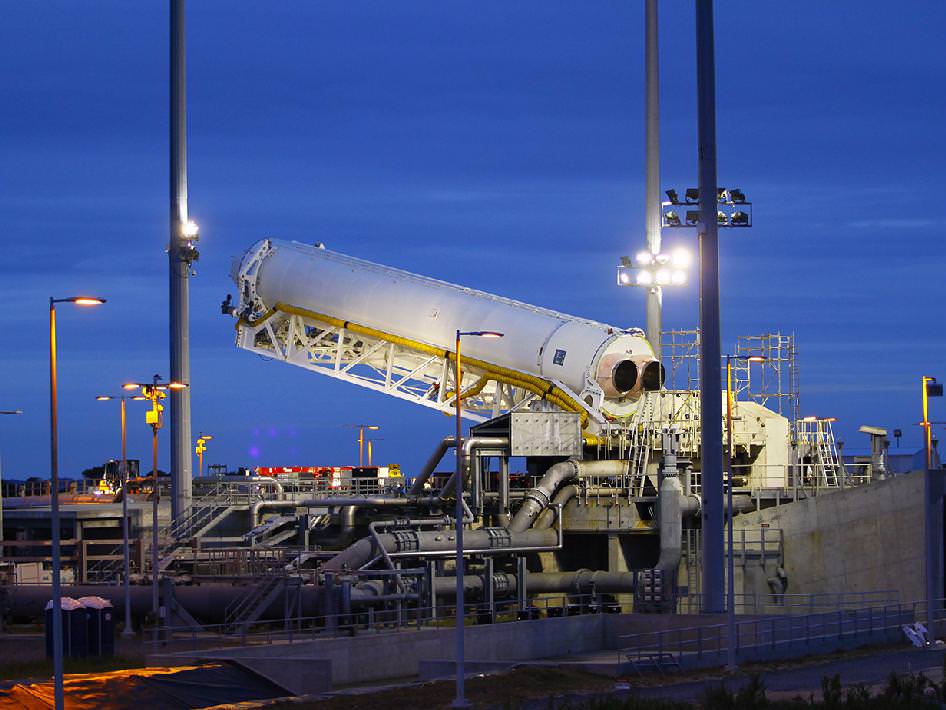
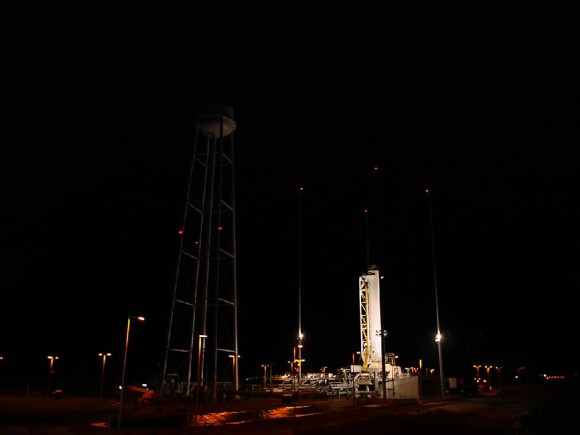
![A4IAv1HCQAEY5lM[1]](https://www.universetoday.com/wp-content/uploads/2012/10/A4IAv1HCQAEY5lM1-580x429.jpg)
